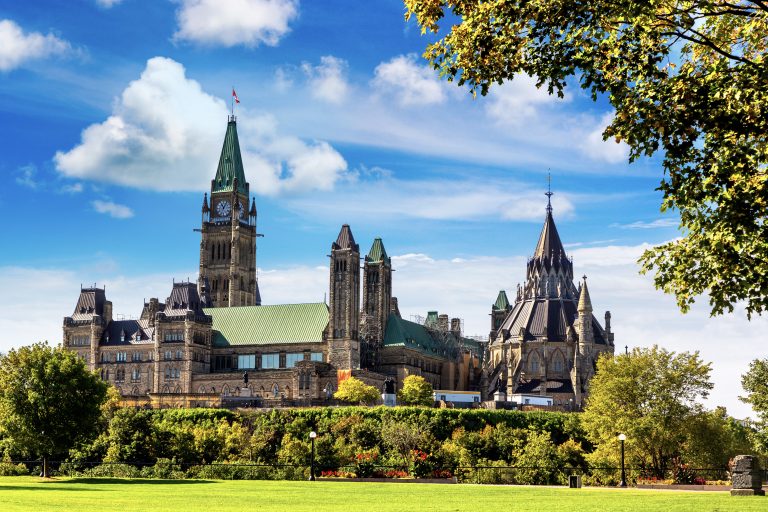News /
Statement: CEBA loan repayment may not be the full-blown crisis it’s been presented by many to be
Statement: CEBA loan repayment may not be the full-blown crisis it’s been presented by many to be
With just over a month before the Canada Emergency Business Account (CEBA) loans come due for Canadian businesses across the country, our Business Data Lab (BDL) is sharing a unique, evidence-based perspective underscoring the resilience of Canadian business and the value of prudent fiscal policy.

With just over a month before the Canada Emergency Business Account (CEBA) loans come due for Canadian businesses across the country, our Business Data Lab (BDL) is sharing a unique, evidence-based perspective underscoring the resilience of Canadian business and the value of prudent fiscal policy.
As part of the BDL’s Q4 2023 Canadian Survey on Business Conditions (CSBC), an in-depth analysis of input from close to 16,000 business respondents, the Canadian Chamber has been equipped with data that tells a different story than the one many have been hearing — CEBA loan repayment may not be the full-blown crisis it’s been presented by many to be.
Roughly half of the business surveyed in the CSBC received a CEBA loan, with construction, accommodation and food services, and mining, oil, and gas showing the highest percentage of active borrowers. Of those, nearly a third have already paid in full, and two thirds of the remainder plan to do so within the terms of the most recent extension. This means that altogether, approximately 76% of CEBA loans are likely to be repaid, with variation across sectors.
You can find below the Canadian Chamber’s statement on the importance of this data, and what it means for Canadian businesses and the legacy of the CEBA program.
What we’re seeing here is the first public data of this calibre on businesses’ intentions and capacity to repay CEBA loans.
The value of these data can’t be overstated. This has been a contentious issue for the government, national associations, and local chambers of commerce across the country. But the data are now giving us a more concrete story, highlighting that the government took a balanced and fiscally responsible approach, while remaining responsive to the concerns of community-level businesses coming out of the pandemic.
When 76% of all borrowers have met or plan to meet the repayment terms, it’s hard to say this program hasn’t served its intended purpose.
After the most recent extension to CEBA, we took stock of the situation, and shifted our position accordingly. It was clear that instead of a blanket extension to the program, the government was best positioned to consider very targeted interventions or supports for the businesses that continue to face the clearest hardships, such as the restaurant and tourism sectors. And we hope to see them continue down that path.
We’re not discounting that some businesses continue to face hardship, while struggling to return to pre-pandemic levels. And it is concerning to us that about 24% of current CEBA borrowers still don’t have a plan to repay, with 15% of outstanding borrowers saying they won’t be able to repay. It will be essential for government to understand these businesses’ unique obstacles to repayment and work with them. There are numerous ways to support these Main Street businesses so that our communities continue to have strong, local employers and service providers. But the data is not telling us that this program needs to be extended indefinitely—for the majority of businesses, it appears to have been the support they needed from government, when they needed it the most.
And given that any outstanding CEBA loans will convert to a term loan in 2023, with full principal repayment not due until December 31, 2026, we can’t discount the great deal of flexibility the government – and taxpayers – will be continuing to provide in support of businesses. That’s especially true when you consider that these long-term loans on outstanding balances have an interest of 5% per annum – a very favourable rate in the current economic environment. There are a few takeaways from this data. First – CEBA was an important program and a successful one. Second – Canadian businesses are reliable borrowers and showed grit in capitalizing on CEBA support to stay in operation. And finally – policy needs to be based on real-time business data for the benefit of Canadian business and in the interest of fiscal responsibility
Matthew Holmes, Senior Vice President, Policy and Government Relations, Canadian Chamber of Commerce
About the Canadian Chamber of Commerce — The Future of Business Success
The Canadian Chamber of Commerce is Canada’s largest and most activated business network — representing over 400 chambers of commerce and boards of trade and more than 200,000 business of all sizes, from all sectors of the economy and from every part of the country — to create the conditions for our collective success. The Canadian Chamber of Commerce is the undisputed champion and catalyst for the future of business success. From working with government on economy-friendly policy to providing services that inform commerce and enable trade, we give each of our members more of what they need to succeed: insight into markets, competitors and trends, influence over the decisions and policies that drive business success and impact on business and economic performance.
– 30 –
Contact
Karl Oczkowski
Senior Director, Corporate Communications and PR
Canadian Chamber of Commerce
613.238.4000 (2231)
koczkowski@chamber.ca
Other News

Canadian Chamber Statement on Immigration Targets Cuts

The Small Businesses Projecting Growth Aren’t Those You Expect, Says Canadian Chamber Report




